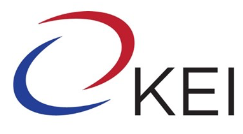Korea's Economy
From the Issue
Korea's Economy Volume 23About Korea's Economy
Korea’s Economy is KEI’s annual journal publication dedicated to the key issues of the day for the Korean economy. Articles in Korea’s Economy are designed to give the casual, but informed reader insight into issues related to Korea’s markets and financial institutions, economic reform, economic relations with the wider world, and North Korea. It is published jointly each year with the Korea Institute for International Economic Policy.
Published May 25, 2011
Download PDFCentral banks have two responsibilities: (1) stabilize the value of the currency and (2) maintain public confidence in deposit money by limiting systemic risk. The first responsibility is primary, ongoing, and the exclusive responsibility of the central bank. Price stability allows market participants to anchor price expectations, and it minimizes differences between actual and expected inflation rates as participants in the market establish economic contracts. Monetary policy cannot change the long-run real performance of the economy but can influence the economy in the short run; however, central banks need to exercise caution in trying to achieve short-run effects on employment and output. Lags in the effect of monetary policy are likely to introduce instability, and the long-run goal of price stability becomes less attainable the more the central bank focuses on short-run issues.
